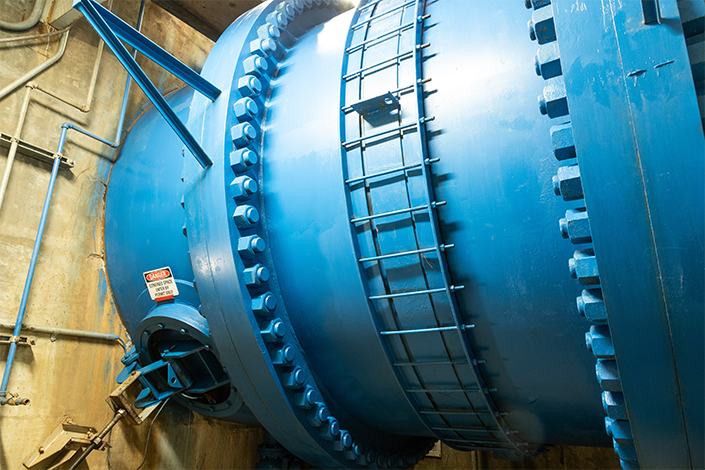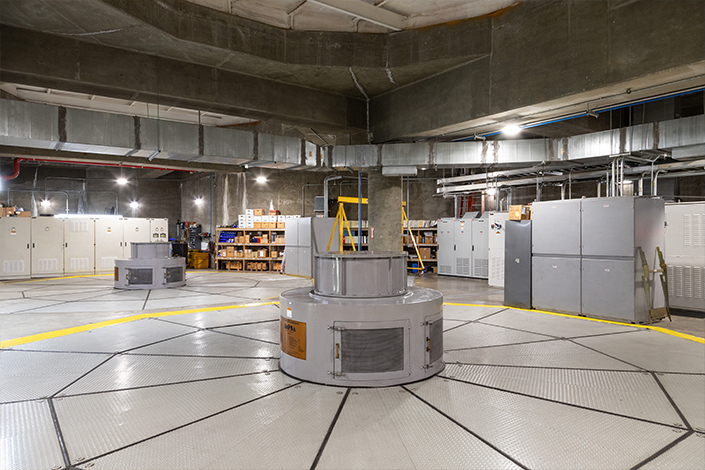By Megan Bevins

West Virginia is abundant in important resources like coal and natural gas, but it’s the Mountain State’s flowing water supply that is currently producing massive amounts of revenue and great benefits for its communities.
With West Virginia’s large, intricate river system and considerable number of streams, a significant amount of water flows through the state each day. In fact, it has more running water than most other states in the country.
Through hydroelectricity, the state can use that water to fuel a portion of its energy, not only promoting sustainability but providing funds through taxes, lease payments and royalties.
For cities like Summersville and New Martinsville, hydropower generation has had a largely positive impact, providing long-term employment for a wide range of fields—from engineers to construction workers—in areas that previously struggled. It also helps improve the communities through investments in areas such as education, infrastructure and health care.
Summersville’s hydroelectric project began in 1992 when the city was issued a license by the Federal Energy Regulatory Commission (FERC) to harvest energy from its large, rockfilled dam. Commissioned in 2001, the project eventually grew into a $53 million development by the Gauley River Power Partners, which resulted in a two-unit hydropower facility built at the bank of the dam.
Robert Shafer, mayor of Summersville, says the revenue from the hydropower facility has allowed the small community to stay well equipped technologically and keep pace with an ever-evolving, modern-day society.
The facility has allowed the community to implement both its short-term and long-term goals, something that might not have been possible without its monetary value. Summersville will be able to achieve even more when the plant’s contractual debt retires in 2027 and its revenue triples.
While the benefits of Summersville’s hydropower facility have been significant, Shafer says it was not without its trials as keeping up with licensing and permission requirements can prove to be a challenge.
The city has recently been trying to find new ways to utilize hydropower.
Currently, the winter pool level for Summersville Lake sits at an elevation of 1,575 feet. At the end of 2023, the city began a study to determine if it could slow storm water release and raise its winter pool levels. Doing this would allow for more water to be put into energy production, increasing the amount of hydroelectricity the city can use.
As the lake and dam have intended uses such as recreation and flood control, the city’s request includes making sure those things aren’t tampered with.
“We are currently under a study authorized by Congress in 2020 to evaluate operations of Summersville Dam,” Shafer says. “Our hope is to find ways to increase generation of clean, green energy without affecting any of the other authorized uses of Summersville Lake and Dam.”
The city also has a plan to implement low flow, which would include five small units moving water out of the lake and through the dam, generating power at a trickle.
“Thirty-five percent of the time flow is too low—800 cubic feet per second (CFS)—to generate power using the two existing turbines,” explains Shafer. “Therefore, we currently have an application before the Department of Energy with hopes to partner in funding a low-flow, five-unit system that will give us the ability to generate energy on all releases from the Summersville Dam.”
Building these extra units would allow the city to generate more hydropower, even with the 800 CFS flow.
“We had it designed; the technology is awesome. We’ll basically be able to put all releases, even the low releases, through the hydropower plant and create energy,” Shafer says.
On the other hand, New Martinsville’s long-standing hydroelectric facility has been powering the city for years.
The facility was built in the 1980s along the Ohio River, incorporated with Hannibal Locks and Dam. According to the West Virginia Office of Energy, it produces enough power for a city seven times the size of New Martinsville.
Sandy Hunt, mayor of New Martinsville, says the facility has allowed the city to become almost debt-free.
“It is now 35 years since it was built and it still brings attention to our community as well as providing high-paying, professional jobs as part of our workforce,” Hunt says.
The hydropower facility has produced administrative revenue for New Martinsville for years and is expected to provide royalties to the city for many years to come.
Hunt says that with hydroelectricity projects, there are often consistent reporting requirements. She also says some maintenance responsibilities can present challenges for the city that owns a hydropower plant. FERC oversees those non-federal plants and determines whether they are up to date or need repairs.
Hydroelectricity projects can be either locally or federally owned. Federal hydroelectricity projects are owned by the Bureau of Reclamation and the U.S. Army Corps of Engineers while non-federal projects are licensed and regulated by FERC. Being non-federal projects, Summersville and New Martinsville must have FERC licenses to operate.
“This project takes pride in our relationship and compliance with FERC,” Shafer says. “It is also appropriate to mention that this project pays FERC approximately $500,000 annually.”
Despite hydropower’s advantages, it hasn’t been used to its full potential yet. With recent technological developments as well as policy support and a demand for clean energy, there is a large amount of room to expand hydroelectricity in the Mountain State.
According to the U.S. Energy Administration, hydropower accounted for 2.9% of the state’s total electricity generation, or approximately 1,647 megawatt hours of 56,665. That makes it 5th place in energy producers in West Virginia.
According to Nicholas Preservati, director of the West Virginia Office of Energy, the state’s hydroelectric market size is $196.4 million as of 2023, making it less than 1% of West Virginia’s GDP of $98.8 billion.
“There is significant opportunity to develop hydroelectric power, as West Virginia is the state with the most water flowing through it in the eastern United States,” he says.
With the state’s water resources and the implementation of advanced mechanics, hydropower can easily expand throughout the Mountain State.

“The technology now exists to put turbines in our rivers and connect them straight to the utility grids of municipalities all over the state,” says Chris Miller, President of Dutch Miller Automotive. “This will aid in dramatically reducing power costs for our people and become foundation of capital and business attraction.”
Starting new hydroelectricity projects requires detailed and thought-out engineering, licensing and maintenance upkeep, and with West Virginia’s well-trained workforce, it would create many valuable jobs in the community. Creating this new electricity would not only be used to power cities within the state but could be exported to other parts of the country as well.
With investments both in updating West Virginia’s existing hydroelectricity efforts as well as possible new projects, the state can further reduce its carbon footprint, helping alleviate its dependence on things like fossil fuels.
“The best opportunity for expanding hydropower in West Virginia is to identify existing non-powered dams that are already constructed and determine which ones could most easily and economically be retrofitted to generate power,” Preservati says.
Some moves have already been made in terms of furthering hydroelectricity. It was announced in 2023 that $2,565,041 would be granted to two hydropower facilities in St. Marys and Montgomery through the Hydroelectric Incentives Program (HIP). The HIP helps to provide funding for water infrastructures that could be used to generate electricity.
“West Virginia has an incredible opportunity in front of her. Everything we do in the future will be about power—as we exponentially grow technology you have to have the power to fuel it,” Miller says.








